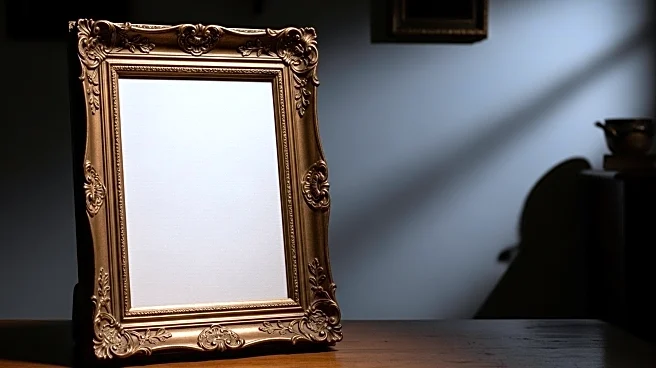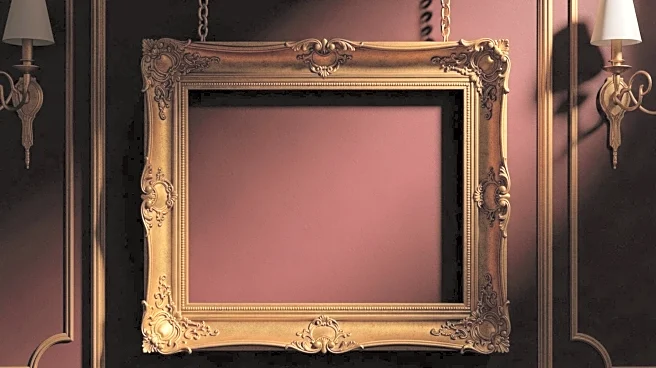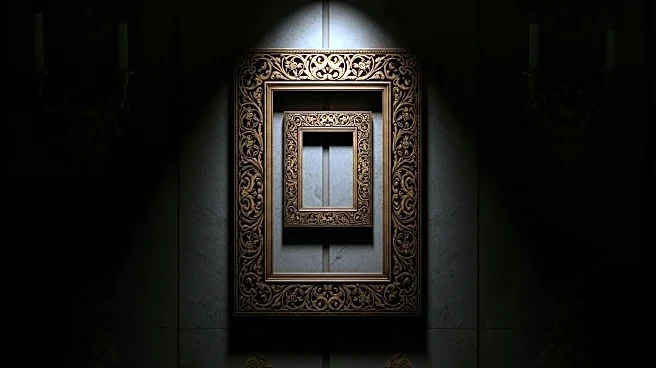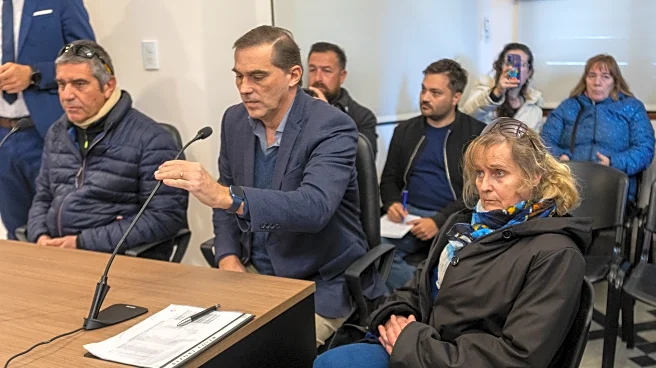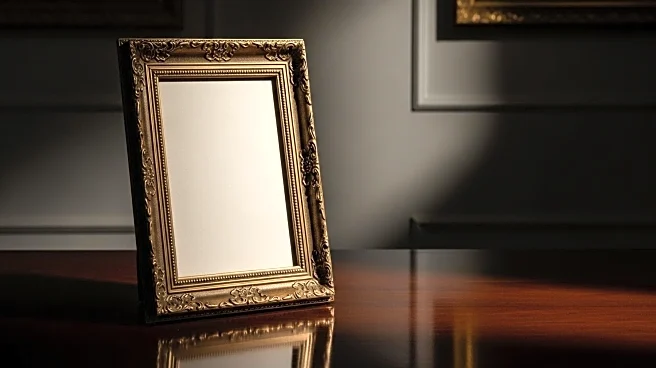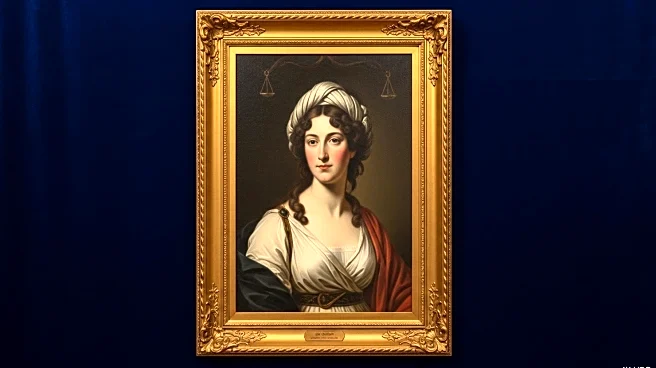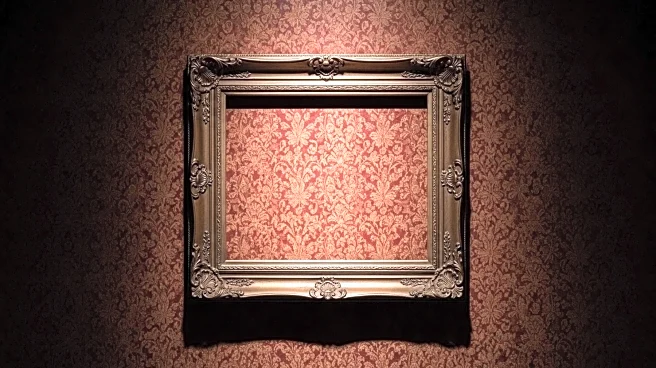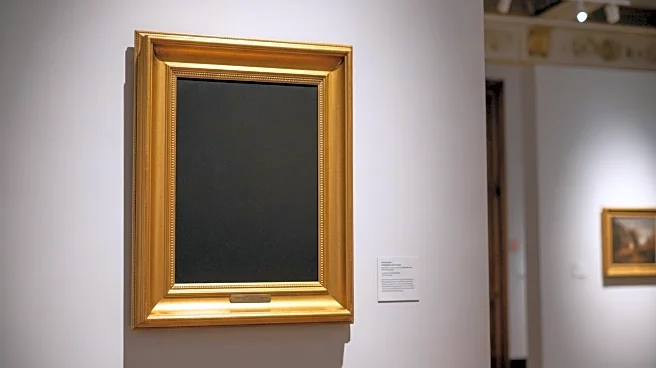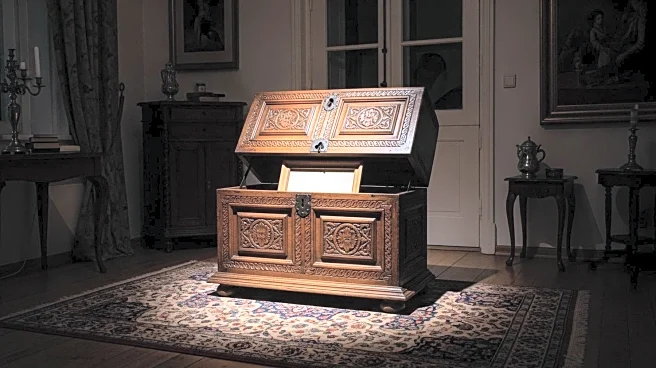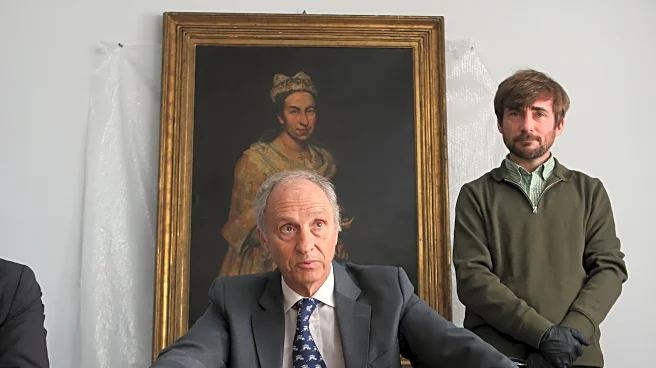What's Happening?
An 18th-century portrait, stolen by the Nazis during World War II, has been recovered in Argentina. The painting, 'Portrait of a Lady' by Giuseppe Ghislandi, was discovered in the home of Patricia Kadgien and her husband Juan Carlos Cortegoso in Mar del Plata. The couple had listed their house for sale, and a photograph of the painting was spotted online by Dutch journalists investigating looted artworks. The painting was originally owned by Jewish-Dutch art dealer Jacques Goudstikker, who fled the Nazis in 1940. The couple has been charged with aggravated concealment, and a travel ban has been imposed on them. The painting's recovery has sparked international interest and legal proceedings to determine its rightful ownership.
Why It's Important?
The recovery of the painting highlights ongoing efforts to return art looted by the Nazis to its rightful owners. This case underscores the complex legal and ethical issues surrounding art restitution, particularly when artworks are discovered in private collections decades after they were stolen. The involvement of high-ranking Nazi officials in the original theft adds a layer of historical significance, as it connects to broader narratives of Nazi looting and genocide. The outcome of this case could influence future restitution efforts and set precedents for handling similar cases, impacting art dealers, museums, and heirs of original owners.
What's Next?
The painting is currently under the jurisdiction of Argentina's supreme court, with prosecutors requesting it be held at the Holocaust Museum in Buenos Aires while ownership is determined. Marei von Saher, Goudstikker's heir, has filed a legal claim in New York, which could lead to international legal proceedings. The case may prompt further investigations into other artworks looted by the Nazis and still missing. The legal process will likely involve complex negotiations between international legal entities, museums, and the heirs of original owners, potentially leading to more artworks being returned to their rightful owners.
Beyond the Headlines
This case raises ethical questions about the responsibility of current holders of looted art to investigate the provenance of their collections. It also highlights the challenges faced by descendants of Nazi officials in dealing with their family's past. The broader implications include the need for international cooperation in art restitution and the role of museums and private collectors in ensuring ethical practices in art acquisition. The case may also influence public awareness and policy regarding the restitution of cultural property.
